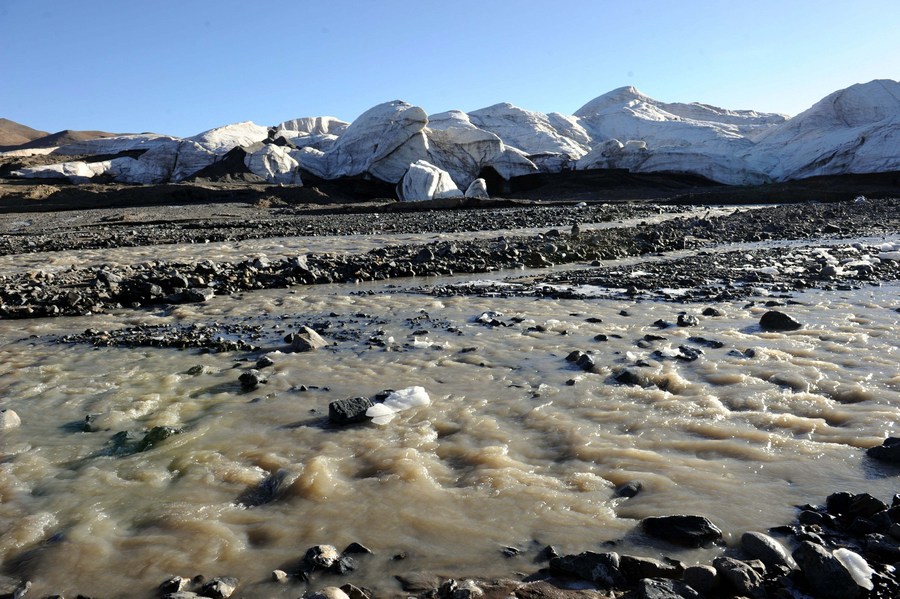 Photo taken on July 15, 2014 shows the melting ice of a glacier in Shuanghu county, Nagqu, Southwest China's Tibet autonomous region. [Photo/Xinhua]
As the risks of climate change loom larger, the "Third Pole" — as the Himalayan watershed is sometimes known — is warming up faster than the global average, resulting in the accelerated melting of glaciers, according to a report unveiled on Thursday.
Produced by the United Nations Environment Program and titled A Scientific Assessment of the Third Pole Environment, the report blamed windblown pollutants for further exacerbating conditions in the highest region on earth.
The Himalayan watershed has experienced increasingly warm and wet weather over the past 60 years, warming at a rate of over 0.3 C per decade, far surpassing the global average. The report also drew attention to a rising cycle in the region.
"Glacier melting has been intensifying since the 1980s, with more intensive melting along the Himalayas and in the southeastern sector of the Third Pole," it said.
The number and the surface area of lakes has been on the rise since the 1990s, with lake water increasing at a rate of 8 gigatons per year, corresponding to an increase in water levels of 0.14 meters per year.
"Projected warming in the Third Pole is greater than the global average; it is expected that there will be widespread increases in annual precipitation over the coming period," the report continued.
The area's high altitude and small population don't make it immune to pollution, as it is located downwind of a number of air pollution hot spots, including South Asia and the Middle East.
Emissions from these regions and dust from nearby deserts like China's Taklamakan blow into the region when wind conditions are suitable.
Accumulated atmospheric black carbon at the southern foot of the Himalayas can cross the mountain range and reach its inland areas. This not only contributes to global warming, but also darkens the surface of glaciers, reducing their reflective albedo and accelerating melting through heat absorption.
Over the past 40 years, the Third Pole has lost a glacier mass of approximately 450 cubic kilometers — between 20 to 80 km³ as a result of black carbon and other light absorbing impurities, the report noted.
By Hou Liqiang |
- Home
- News Tibet |Exclusive |China |World |Related News |Latest
- Documents White Papers |Others
- Photo Politics |Economy & Society |Culture & Religion |Human & Nature |Beautiful Tibet |Other Tibetan-Inhabited Area |Exchanges |Related
- Video News |Documentary |Micro-Video |Entertainment
- Art
- Tourism
- In Focus
- About Tibet






